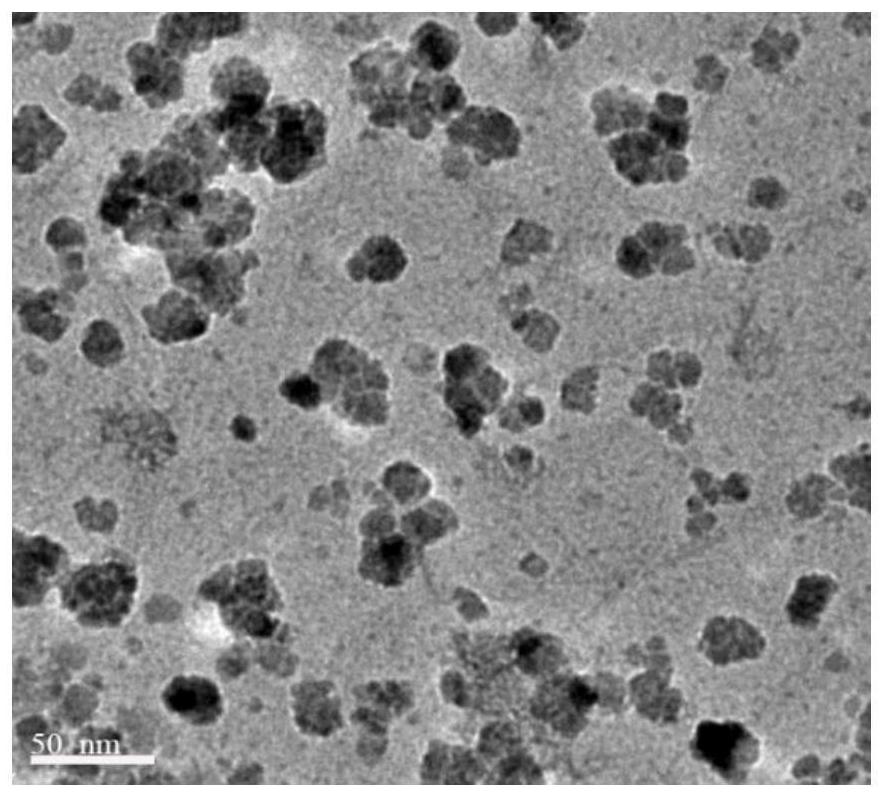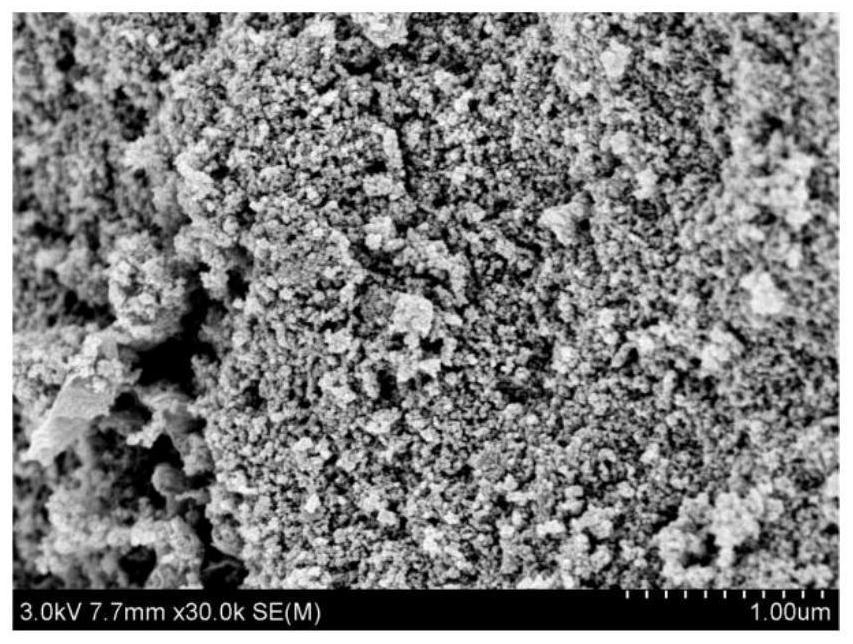Graphene oxide surface arsenic-antimony double-imprinted polymer capable of being magnetically separated in underground medium and preparation method thereof
A graphene surface and imprinted polymer technology, applied in the direction of alkali metal compounds, chemical instruments and methods, alkali metal oxides/hydroxides, etc., can solve problems such as arsenic and antimony pollution, reduce agglomeration and facilitate elution and recombination, good adsorption effect
- Summary
- Abstract
- Description
- Claims
- Application Information
AI Technical Summary
Problems solved by technology
Method used
Image
Examples
preparation example Construction
[0040] The preparation method of the arsenic-antimony double imprinted polymer on the surface of graphene oxide that can be magnetically separated in the above-mentioned underground medium comprises the following steps:
[0041] A. Ultrasonic disperse 0.3-0.86g of GO into 0.45L of ultrapure water until GO is evenly dispersed in the ultrapure water to stop, the time is about 1 hour, and then a stable GO suspension is obtained;
[0042] B. Add 2.916g of FeCl 3 and 2.502 g of FeSO 4 ·7H 2 O was dissolved in 50ml of deionized water, and then slowly poured into the suspension of A at room temperature. In order to mix evenly with A, pre-stirring was required for 40 minutes;
[0043] C. Increase the temperature of the solution in step B to 60°C, slowly add ammonia water dropwise to the solution under anaerobic conditions by in-situ precipitation method, so that the pH in the solution is greater than 10, and then continue to increase the temperature to 90°C and continue Stir for 4 ...
Embodiment 1
[0050] A. Ultrasonic disperse 0.3g GO into 450mL of ultrapure water for about 1 hour, and then obtain a stable GO suspension;
[0051] B. Add 2.916g of FeCl 3 and 2.502 g of FeSO 4 ·7H 2 O was dissolved in 50ml of deionized water, then slowly poured into the A suspension at room temperature, and mechanically stirred for 40min;
[0052] C. Increase the temperature of the solution in step B to 60°C, slowly add ammonia water dropwise to the solution under nitrogen protection, so that the pH in the solution is greater than 10, then continue to increase the temperature to 90°C and continue stirring for 4 hours;
[0053] D. Use a magnet to collect the product in the solution of step C, wash it repeatedly with ethanol and ultrapure water for 3 times, and then put the product in a vacuum drying oven at 60°C to dry to obtain Fe 3 o 4 / GO (MGO) material, where GO and Fe 3 o 4 The mass ratio is 0.14:1.
Embodiment 2
[0055] A. Ultrasonic disperse 0.54g GO into 450mL of ultrapure water for about 1 hour, and then obtain a stable GO suspension;
[0056] B. Add 2.916g of FeCl 3 and 2.502 g of FeSO 4 ·7H 2 O was dissolved in 50ml of deionized water, then slowly poured into the A suspension at room temperature, and mechanically stirred for 40min;
[0057] C. Increase the temperature of the solution in step B to 60°C, slowly add ammonia water dropwise to the solution under nitrogen protection, so that the pH in the solution is greater than 10, then continue to increase the temperature to 90°C and continue stirring for 4 hours;
[0058] D. Use a magnet to collect the product in the solution of step C, wash it repeatedly with ethanol and ultrapure water for 3 times, and then put the product in a vacuum drying oven at 60°C to dry to obtain Fe 3 o 4 / GO (MGO) material, where GO and Fe 3 o 4 The mass ratio is 0.25:1.
PUM
| Property | Measurement | Unit |
|---|---|---|
| particle diameter | aaaaa | aaaaa |
Abstract
Description
Claims
Application Information
 Login to View More
Login to View More - R&D
- Intellectual Property
- Life Sciences
- Materials
- Tech Scout
- Unparalleled Data Quality
- Higher Quality Content
- 60% Fewer Hallucinations
Browse by: Latest US Patents, China's latest patents, Technical Efficacy Thesaurus, Application Domain, Technology Topic, Popular Technical Reports.
© 2025 PatSnap. All rights reserved.Legal|Privacy policy|Modern Slavery Act Transparency Statement|Sitemap|About US| Contact US: help@patsnap.com



